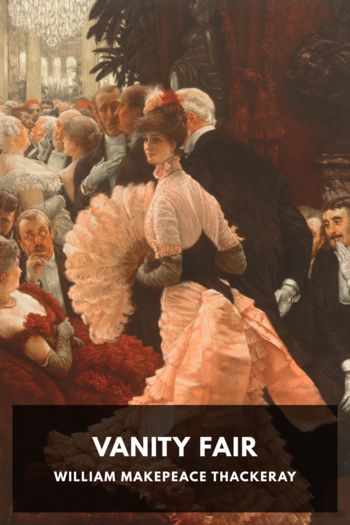Just Jackie Edward Klein (top 10 novels of all time .TXT) 📖

- Author: Edward Klein
Book online «Just Jackie Edward Klein (top 10 novels of all time .TXT) 📖». Author Edward Klein
By this time, Warnecke was something of an architectural renegade. As the architecture critic Benjamin Forgey noted in The Washington Post, “Warnecke was … a Californian who didn’t altogether take to the rigid principles of modern architecture advanced by his teachers (the famed Walter Gropius among them) at the Harvard Graduate School of Design. At the University of California campus at Berkeley, and elsewhere in his native state, he had taken great pains to design buildings that fit the historical context, a quality not high on the usual modernist list.”
After he became President, Kennedy asked Rose-bowl to help Jackie with one of her pet projects—the crusade to save Lafayette Square, the quadrangle of splendid nineteenth-century town houses directly across Pennsylvania Avenue from the White House. The houses had been targeted for demolition by the Eisenhower Administration.
“I applied my theory of contextual design and proposed new buildings that would fit behind and work with the historical structures,” Warnecke explained years later. “But my design was bitterly opposed by members of the Fine Arts Commission and the architectural community. All of the President’s advisers gave up on saving the historic buildings, but Jack gave Jackie permission to make one last-ditch effort. She wrote a letter to the people in charge of the demolition, telling them that she would not permit the wrecker’s ball to touch one of those old buildings.
“The night before I was to present my plan for Lafayette Square, I went to a party at the British Embassy, and met Jackie for the first time. I danced with her, and we talked, and of course I fell instantly in love with her. She was full of spirit and play. She was delightful to be with. Inquisitive as hell. She said she wanted to see the design and models I had done.
“So I met her the next morning. She was wearing the same pink suit she would wear in Dallas, or one that looked very much like it. She was thrilled with my plan. She took over the reins of the project for the President, and attended the follow-up meetings. From then on, we got to see a hell of a lot of each other.”
Warnecke was a bachelor; he and his wealthy socialite wife Grace Cushing had been divorced in 1960. It was said that he was worth several million dollars. He kept homes in a number of places—on Russian Hill overlooking San Francisco Bay, in the exclusive Georgetown section of Washington, and in Hawaii. He had his own three-hundred-acre ranch on the Russian River, forty miles north of San Francisco, where he went trail riding on his horses.
“Jack Warnecke was very self-assured,” said Robin Duke, the wife of JFK’s chief of protocol. “Like most great big men, he looked down on people physically, which sometimes gave the impression that he was pompous. But he was not pompous. He understood what the French call placement, and knew where he wanted to be. I thought him attractive, and I’m sure that Jackie thought him attractive, too.”
Working together on Lafayette Square, Jack Warnecke and Jackie discovered they had a lot in common. She admired his knowledge of design, especially that of the Beaux Arts school, which emphasized historic forms and details. He admired her pluck and determination.
“No one in Washington gave a damn what happened to Lafayette Square,” he said. “Jackie was the only one.”
In her 1961 book The Death and Life of Great American Cities, Jane Jacobs had criticized the destructive American habit of razing large areas of cities and replacing them with sterile, modern buildings. Jacobs was not a preservationist herself, but she did sound a clarion call about the large-scale development that was ruining America’s cities.
Before Jackie entered the White House with Jack, public officials thought nothing of destroying beautiful buildings of historic value in the name of progress. By taking a stand on Lafayette Square, Jackie forced people to think in a new way. She was the first person at a high level to give support to the preservation movement that flowered in the early sixties. She legitimized a movement that changed the face of urban America, and she continued to champion it for the rest of her life.
As a result of his work on Lafayette Square, Warnecke became the unofficial Kennedy family architect. He designed Teddy Kennedy’s house in Hyannis Port, and Bobby’s pool house. He worked on Hickory Hill, Bobby’s home in Virginia, and he was designing a new windmill to replace one that had burned down at the Auchinclosses’ Hammersmith Farm.
“I got all involved with Jack and the Kennedy Administration,” Warnecke said. “I was invited to Jackie’s private parties upstairs in the White House. I was a bachelor in the middle of the Kennedy White House, and I took part in some of Jack’s womanizing, too. A month before the assassination, I helped Jack pick out a site at Harvard University for the library and museum that would someday house his personal and official papers.”
The friendship between Jackie and Warnecke went completely unnoticed for a long time. At first they were so deeply engrossed in the design of the grave site that they themselves were unaware of what was happening to them. The only person who seemed to notice that they were developing feelings for each other was Bobby Kennedy.
“Jackie and I talked a lot about Bobby,” Warnecke said. “She’d show me family pictures and say, ‘Look, that’s Bobby. When he was growing up, they called him the





Comments (0)